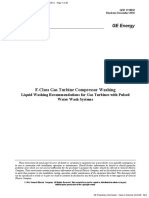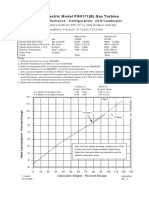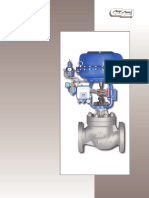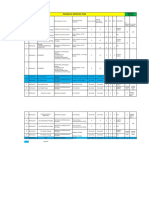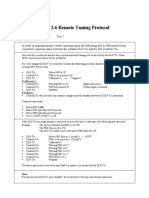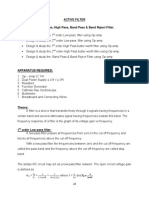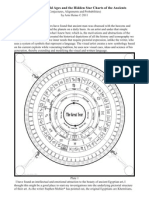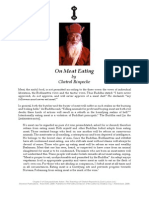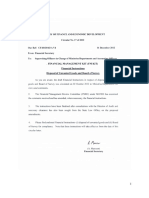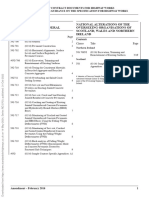Wheelspace in Gas Turbine - Automation & Control Engineering Forum
Wheelspace in Gas Turbine - Automation & Control Engineering Forum
Uploaded by
nboulegrouneCopyright:
Available Formats
Wheelspace in Gas Turbine - Automation & Control Engineering Forum
Wheelspace in Gas Turbine - Automation & Control Engineering Forum
Uploaded by
nboulegrouneOriginal Title
Copyright
Available Formats
Share this document
Did you find this document useful?
Is this content inappropriate?
Copyright:
Available Formats
Wheelspace in Gas Turbine - Automation & Control Engineering Forum
Wheelspace in Gas Turbine - Automation & Control Engineering Forum
Uploaded by
nboulegrouneCopyright:
Available Formats
NETWORK SITES:
EXPLORE ARTICLES FORUMS EDUCATION COMPANY DIRECTORY CONNECT WITH US
Home Forums General Discussion Power Generation
Wheelspace in Gas Turbine Reply
DENI C E T H OMAS · Apr 7, 2010
Mark Forums Read Search Forums Watched Forums Watched Threads New Posts
Jump to new Watch
Thread Starter #1
D Denice Thomas
Apr 7, 2010
Does Wheelspace means space between nozzles and buckets?
Can anybody pls tell what does First Forward Inner wheelspace. First Forward Outer Whelspace, First Aft Outer wheelspace... means?
M/c :GE Fr.VI
Report Like Reply
CSA #2
Apr 7, 2010
First, there is no such thing as a Frame VI. There is Mark VI, and there is Frame 6. But not even a Frame 6 controlled by a Mark VI is a Frame VI.
Second, you're close. Wheelspace is the area between the turbine "wheels" and the stationary turbine casing. The space is below the turbine buckets and
nozzles, around the shaft. The turbine buckets mount on the turbine wheels, and the diaphragms are the stationary "separators" that the wheels fit in between.
So, the turbine wheels are attached to the turbine shaft. The turbine buckets are attached to the wheels. And the turbine shaft and wheels and buckets rotate
between nozzles and stationary casing sections. Each turbine stage has a wheel, and there is a wheelspace upstream (forward) of each wheel and downstream
(aft) of each wheel.
There is a "knife edge" immediately below the turbine buckets and that knife edge rotates in very close proximity to a knife edge below the nozzles. This
rotating/stationary arrangement forms a seal and that seal is supposed to keep the hot combustion gases from traveling down into the wheelspaces and
overheating the casing and rotors (the combustion gases are supposed to travel only through the nozzles and buckets for the most efficiency).
There is cooling and sealing air that is piped into the wheelspaces that is also supposed to keep the pressure in the wheelspace slightly higher than that of the
combustion gases passing through the buckets and nozzles. So, this air, in addition to keeping the pressure just slightly higher than the combustion gas
pressure is also providing some cooling to the wheelspaces.
If hot gases leak into the wheelspaces, that's not good for the turbine wheels or the casing. And if there's too much cooling and sealing air then it's likely going
to flow up into the combustion gas path and dilute the combustion gas temperature. It's all a very delicate balancing act.
Third, in the forward first stage wheelspace of older machines, there was an inner set of T/Cs and an outer set of T/Cs (one set was closer to the shaft than the
other set).
That's wheelspaces. The next time you see the turbine rotor out of the machine, look closely at it. The wheels are the part of the shaft the turbine buckets are
mounted on. And the idea is to keep all of the combustion gases flowing through the nozzles and buckets and not leaking down into the casing and around
the wheels. Also look for the rotating "seals", they are sometimes called 'angel wings' (because they can be damaged very easily when setting the rotor into the
shell/casing or when removing it from the shell casing) in addition to 'knife edges' (one side of the seal is usually tapered almost to a knife edge).
Hope this helps. It's very difficult to do without pictures or graphics.
Report Like Reply
Manit #3
M Apr 8, 2010
but one question, why the second wheelspace AFT and FRWD temperature less than first and third stage
TTWS1FO1 279
TTWS1FO2 276
TTWS1AO1 235
TTWS1AO2 237
TTWS2FO1 231
TTWS2FO2 229
TTWS2AO1 205
TTWS2AO2 206
Report Like Reply
Maint #4
M Apr 18, 2010
Dear CSA can you give some point to make temp increase in wheelspace temp?
Report Like Reply
CSA #5
Apr 19, 2010
I don't understand the question.
Presuming the cooling and sealing air flows are all correct (proper orifices installed in proper places) and the seals below the buckets and nozzles are in good
repair and the turbine shaft is operating in the proper axial position, the wheelspace temperatures should be stable and neither increase or decrease over time
at comparable operating conditions.
An increase in temperature could mean either the cooling and sealing air flows are incorrect, or the seal strips below the buckets and nozzles are deteriorating
or leaking, or the turbine shaft has shifted position axially and the seal strips are leaking.
Other than this, I don't understand the question.
Oops, one more typical cause for wheelspace temperatures to change: Improperly or poorly installed wheelsapce temperature T/Cs after a maintenance
outage.
Wheelspace temperatures are values to be monitored over time for trends, either increasing or decreasing. If they increase very quickly, then there's probably
other indications of problems, like vibration or exhaust temperature spreads, for example. If they increase or decrease over time and never stabilize, then that's
an indication of problems such as above.
The value of a wheelspace temperature at any given instant in time is pretty meaningless. It's the relationship of that value to the one the previous hour, or
previous day, or previous week, to determine if the value is increasing or decreasing over time and by what rate.
This topic has been covered in previous threads on control.com. Use the 'Search' feature to find more information.
Report Like Reply
CSA #6
Apr 19, 2010
Maint,
<p>TTWS1FOn - Turbine Temperature, Wheelspace - First Stage Forward, Outer T/C #n
TTWS1A0n - Turbine Temperature, Wheelspace - First Stage Aft, Outer T/C #n
TTWS2FOn - Turbine Temperature, Wheelspace - Second Stage Forward, Outer T/C #n
TTWS2AOn - Turbine Temperature, Wheelspace - Second Stage Aft, Outer T/C #n</p>
I don't see a "third stage" wheelspace temperature in the list (it would be TTWS3.... )
The temperatures are generally decreasing from 1st stage forward to 1st stage aft to 2nd stage forward to 2nd stage aft. I wouldn't consider a 4 deg difference
to be an increase of any magnitude. I would attribute that to improperly installed T/Cs (either 1st stage aft or 2nd stage forward; can't be sure, could even be
both).
Wheelspace temp's should decrease slightly from one stage to another, presuming everything is working correctly. The difference in your example from 1st
stage aft to 2nd stage forward is negligible.
Again, as has been said many times before on control.com: The value of any reading at any instant in time is virtually meaningless. The difference in readings
over time (the "trend") is the most important value. Is the value increasing or decreasing, and how fast is it increasing or decreasing? If the values you are
reporting are stable and aren't increasing or decreasing with time, then they're likely just fine, and any small anomaly like the one you are seeing is attributable
to installation.
The next time the turbine is apart and the transition pieces and the turbine rotor is removed from the casing, get in and follow the wheelspace guide tubing
from the outside of the casing to the diaphragm and the "nipple" that the T/C has to be routed into. When the unit is assembled and one of the last things
that's done is to insert the wheelspace T/Cs into the unit, it's very difficult to get them properly installed. Because one cannot physically see the tip in the
"nipple" to see if it's even in the nipple, is touching the nipple, or if it's touching the metal around the nipple. It's just very difficult to "snake" (route) the T/C
through the guide tube and into the nipple. Sometimes the T/Cs come with the compression ferrules "set" (compressed) in the proper place to make
installation a little easier (presuming they were purchased from GE; lots of people buy their components from other vendors who don't set the ferrules to make
installation a little easier).
The readings you have provided are actually very "good" in that there are not high differentials between the #1 and #2 T/Cs in the same wheelspace. When the
T/Cs are very poorly installed, the readings can have very high differentials, which is physically impossible unless there is a catastrophic failure which would
likely render the turbine inoperable. (If the T/Cs are properly installed, or even similarly poorly installed, they will read very similarly, because the turbine wheels
are rotating at very high speeds (3000 RPM or 3600 RPM or approx. 5100 RPM) so the "air" in the wheelspace, which is relatively thin and small) is rotating very
fast and mixed very well! So, large differentials between T/Cs installed in the same wheelspace are likely the result of poor or improper installation.)
So, again the readings in your example are pretty good, and even with the very slight "increase" from 1st stage aft to 2nd stage forward, which again is
negligible. The important thing is what are the readings doing over time. Are they increasing or decreasing or relatively stable over time? How quickly are they
increasing or decreasing if they're not stable?
Does this answer the question?
Report Like Reply
Maint #7
M Apr 20, 2010
Dear CSA
Many Thanks to explain .
Report Like Reply
DEV #8
D Apr 20, 2010
Basic reasons for improvement of Wheel space temperature:
1. Restriction in cooling air lines
2. Excessive distortion of the shaft
3. excessive distortion of the Exhaust diffuser
4. Thermo couple malfunction
5. wear of turbine Shrouds/Seals
6. Malfunctioning of combustion system
7. Leaks in the cooling air lines
8. Ambient conditions: High compressor inlet temperature leads to increase the compressor discharge (extraction’s to supply the air for Rotor cooling)
temperature. But some machines, compressor discharge/Extractions cooled externally before supply the Cooling air for cooling—For this type of systems,
compressor discharge temperature is not a factor for rotor cooling.
9. Condition of Air intake system- dust absorption capacity--- dust will leads to choke the cooling air lines over a period of time.
10. After Cooling, Cooling air pressure (which is entering in to the Hot gas path) should be greater than the hot gas pressure in the turbine at any particular
location--- Normally it will happen for external cooling machines(This is depends on the pressure drop across the heat exchanger and pipe lines).
11. Improper positioning of thermo couple.
I hope it is useful for you.
Report Like Reply
DEV #9
D Apr 21, 2010
Hi to all,
one small correction I am posting which is belongs to point no-10.
Before correction: After Cooling, Cooling air pressure (which is entering in to the Hot gas path) should be greater than the hot gas pressure in the turbine at
any particular location--- Normally it will happen for external cooling machines(This is depends on the pressure drop across the heat exchanger and pipe lines).
corrected statement: After Cooling, Cooling air pressure (which is entering in to the Hot gas path) should be greater than the hot gas pressure in the turbine at
any particular location--- Normally it will "NOT" happen for any machine except external cooling machines(This is depends on the pressure drop across the
heat exchanger and pipe lines).
Report Like Reply
chand #10
C Aug 23, 2010
wheelspace means space b/w buckets.
Report Like Reply
bharadwaj veturi #11
B Mar 2, 2014
TTWS1FI1 174
TTWS1FI2 189
TTWS1AI1 219
TTWS1AI2 208
TTWS2FI1 297
TTWS2FI2 257
TTWS2AI1 277
TTWS2AI2 277
Are the above readings fine, and what does "O" stands for in the previous post tags where as in my case it is "I" on Mark-VI Based GE Turbine.
TTWS1FO1 279
TTWS1FO2 276
TTWS1AO1 235
TTWS1AO2 237
TTWS2FO1 231
TTWS2FO2 229
TTWS2AO1 205
TTWS2AO2 206
Report Like Reply
CSA #12
Mar 2, 2014
As explained above in this thread, "O" stands for 'Outer', and "I" stands for 'Inner.'
No one can say for certain if any wheelspace temperatures at any given instant in time are good or bad. There are simply too many intangibles (how long has
the unit been running (since it was last started)?; what load is the unit at?; how long since the wheelspace thermocouples were replaced?; but most importantly,
have the individual temperatures been increasing or decreasing with time and by how much have they been increasing or decreasing with time (rate of
increase/decrease)).
Short of a catastrophic failure which would likely have resulted in a trip and/or damage to the turbine section of the machine, it's physically impossible for the
temperature on one side of a wheelspace to be be different than the temperature on the other side of the wheelspace.
The wheelspace temperature T/Cs are intended to measure the air temperature in the very small axial distance (mm) between the stationary portion of the
turbine casing and the rotating turbine wheel(s). The rotating turbine wheel is spinning at anywhere from 3000 RPM to as much as 5100 RPM--mixing the air in
the wheelspace. That's anywhere from 10 rev's per second to 85 rev's per second. It's simply not possible for the air temperature in any wheelspace at any
point in the wheelspace to be different from any other point in the wheelspace because it's continually being mixed by the rotating turbine wheel!
Having said that, the way the wheelspace temperature thermocouples are inserted into the "thermowell" has a <b>GREAT</b> effect on the measured
temperature. The thermocouples have to be pushed through stainless steel tubes up into the thermowell (sometimes over distances up to a meter in length),
and if they are not positioned properly in the thermowell they will not accurately measure the temperature in the wheelspace.
And, since there are two thermocouples in each wheelspace there is twice the opportunity to improperly insert the wheelspace temperature thermocouples in
any given wheelspace. Which means the differential in any given wheelspace can be high--but that's <b>NOT</b> because the actual air temperature in the
wheelspace is different on the two sides of the machine; it can't be! It's because of the improper insertion of the thermocouple(s) measuring the wheelspace air
temperature.
Most wheelspace temperature thermocouples are inserted after the machine is put back together, and it's not possible to see how the thermocouple tip is
positioned in the thermowell (it's not even possible to see when the machine is open!).
So, the only indication that can be trusted with regard to wheelspace temperatures is the trend of the wheelspace temperature readings at similar turbine
loads. Even if there is a high differential between two wheelspace thermocouple readings, if a problem with the cooling in a wheelspace develops causing the
air temperature in the wheelspace to increase (or decrease) <b>BOTH</b> wheelspace temperature readings in the wheelspace will increase (or decrease) at
the same time. (Remember--that turbine wheel is spinning and mixing that air all the time!) If the rate of increase (or decrease) is fast, then it's pretty likely
something is definitely amiss. If the rate of increase (or decrease) is slow, then it bears monitoring over time. If the rate of increase (or decrease) is sudden and
large, then something is probably definitely wrong.
If the wheelspace temperature differentials or magnitudes are suddenly different immediately after a maintenance outage during which the wheelspace
thermocouples were removed and re-inserted, then it's probably a problem with the way the thermocouples were re-inserted, and should be monitored over
time. If the temperature magnitudes/differentials are really high, then the suspect T/Cs should be removed, inspected, and re-inserted and/or replaced, as
necessary and the temperature checked again after the turbine is re-started.
But to simply present a set of wheelspace temperatures without any indication of running conditions, history, load, etc., and ask, "Are these okay?" is, well--it's
just impossible to make any comment with any degree of certainty that is meaningful.
It's extremely unfortunate that GE or their packagers have never really explained what wheelspaces are, how the temperatures are measured, and what kind of
problems can occur with the temperature measurement(s), and what kinds of real wheelspace temperature problems can and do occur. But, it's a fact--they
don't, and they haven't, and they won't likely ever do so.
The next time your machine is open during a maintenance outage (the turbine section is exposed and you can look down between the turbine wheel and the
turbine casing ("diaphragm"), make sure to examine it closely. Also, if the rotor is remove, be sure to look at the turbine nozzle segments where the
wheelspace thermowell is located; it looks like a "nipple" (a small bump).
Also, follow the tubing from the place on the outside of the turbine or compressor discharge casing to the nozzle segment to see just how long it is and how
many bends are in the tubing. At the very end of the tubing the tip of the thermocouple has to make an almost 90 degree bend! And all of this is done without
being able to see the tip at all.
I know this is difficult to imagine; but the next time the turbine is open, make it a point to go out and check out the wheelspace, and the wheelspace
temperature thermowells, and the guide tubes. You'll never wonder again how two thermocouples in the same wheelspace can read so differently, and you'll
understand why the only wheelspace temperature "reading" that matters is the trend of temperatures in a particular wheelspace.
Hope this helps!
Report Like Reply
makarand #13
M Yesterday at 1:05 PM New
HI all,
We have 2 GE Frame 6B gas turbines at our facility. The design base load is 35 MW & ambient temperature of avg. 26 degree Celsius and a Mark 6 control
system. We have a 17 stage axial compressor, 10 combustion chamber & 3 stage turbine.
Recently, in one of the gas turbines, when outside ambient temperature increased, suddenly the second stage wheel space temperatures i.e. forward outer &
aft (TTWS2F01/TTWS2F02 & TTWS2A01/TTWS2A02) increased i.e. up to alarm limit.
With same parallel machine had no such issue. Experts share their views ..
Thanks
Report Like Reply
glenmorangie #14
G Today at 2:25 AM New
Did you have any other alarms at the same time? What was the change in ambient temp? Do you know what the CPD pressure was and did it change ? What
was the change in 2nd. stage W/space.temps?
Report Like Reply
Write your reply...
Attach files Post reply Preview
Similar threads Forum Replies Date
T Wheelspace Thermocouple Exact Location Power Generation 6 Mar 22, 2019
A High Exhaust Spread and High Wheelspace Temperature Power Generation 8 Nov 16, 2018
N Gas Turbine Wheelspace Differential Temperature Power Generation 7 Oct 7, 2016
K Wheelspace Temperatures in Gas Turbine Power Generation 2 Sep 27, 2015
Y Wheelspace Thermocouple Gas Turbine General Automation Chat 7 Apr 9, 2008
Y O U M AY ALSO L IK E
What is Model Predictive ABB Launches New Range of Keeping Up with Industry Nanotec Unveils New
Control (MPC)? Pressure Transmitters for Trends: Are You Attending Compact Captive Linear
Industrial Applications Virtual Events? Actuator With High
Positioning Speed
by Mitesh Agrawal by Alessandro Mascellino by Maddie Bradshaw by Alessandro Mascellino
WHO WE ARE PRODUCTS INDUSTRY CONTENT
Circuit Protection Agriculture Company Directory
Connectors Automotive Forums
Control Panel Building Industry White Papers
Control Systems & HMIs Cement News
More about us
Enclosures, Racks & Cabinets Chemical Technical Articles
IIoT Electronics Textbook
Industrial Controls Food & Beverage Worksheets
CONNECT WITH US Motors Metal
Networking Military/Aerospace
PLCs & PACs Mining
Pneumatics & Hydraulics Nuclear
Power Oil & Gas
Contact Us Advertise Protocols Medical & Pharmaceutical
Robotics Pulp & Paper
Write For Us Safety Rubber & Plastics
Sensors Utilities
Simulation View All
Test & Measurement
SIGN UP
Vision Systems
Wire & Cable
Enter your email address Register
View All
MORE FROM OUR NETWORK
© EETech Media, LLC. All rights reserved Privacy Policy · User Agreement
You might also like
- Essential Applications of Musculoskeletal Ultrasound in Rheumatology-Richard J. Wakefield, Maria Antonietta D'AgostinoDocument358 pagesEssential Applications of Musculoskeletal Ultrasound in Rheumatology-Richard J. Wakefield, Maria Antonietta D'AgostinoCristina PavelNo ratings yet
- GEK 116682 7FA9FA Cooling and Sealing Air System PDFDocument14 pagesGEK 116682 7FA9FA Cooling and Sealing Air System PDFZaki nouiNo ratings yet
- Gek 111895 F-Class Gas Turbine Compressor WashingDocument28 pagesGek 111895 F-Class Gas Turbine Compressor WashingZaki noui100% (1)
- Offer For Supply - 222712Document2 pagesOffer For Supply - 222712Sachin Kumar Singh100% (1)
- F Class Gas Turbine Compressor Water Wash SystemDocument8 pagesF Class Gas Turbine Compressor Water Wash SystemAbdelaziz Eldeeb100% (3)
- Reuben Swinburne Clymer - Soul Consciousness 1 Ebook - PDF PDFDocument112 pagesReuben Swinburne Clymer - Soul Consciousness 1 Ebook - PDF PDFAlfa1100% (1)
- Compressor Water Wash SystemDocument10 pagesCompressor Water Wash SystemCarlos GonzálezNo ratings yet
- Turbine Design SKODA MTD10-30Document13 pagesTurbine Design SKODA MTD10-30Rajnish SrivastavaNo ratings yet
- Gaz Turbine Inlet Air GoggingDocument9 pagesGaz Turbine Inlet Air Goggingbananosnet100% (1)
- Bleed Valve FunctionDocument2 pagesBleed Valve FunctionajaysapruNo ratings yet
- Gas Turbine Engines Characteristics and Performance Combustion ChamberDocument2 pagesGas Turbine Engines Characteristics and Performance Combustion ChamberNicolas Guatibonza L100% (1)
- GT-1041-Wheelspace TCPLS, Disconnection and RemovalDocument12 pagesGT-1041-Wheelspace TCPLS, Disconnection and RemovalMadih ElghannamNo ratings yet
- 9e ChinaDocument7 pages9e Chinanabil160874No ratings yet
- GT13E2 Infographic - Final - PDFDocument1 pageGT13E2 Infographic - Final - PDFGregory StockNo ratings yet
- Modeling of Compressor Blade Behavior Under Tip Rubbing ConditionsDocument21 pagesModeling of Compressor Blade Behavior Under Tip Rubbing Conditionsamir moniriNo ratings yet
- 6B Transition Piece Product Sheet PDFDocument2 pages6B Transition Piece Product Sheet PDFkamran kainpor100% (1)
- SBLM2500 Ind 179Document14 pagesSBLM2500 Ind 179Daniil SerovNo ratings yet
- Equipment Definition: Component LiteratureDocument5 pagesEquipment Definition: Component LiteratureAbbas AkbarNo ratings yet
- Applicability Guide PDFDocument2 pagesApplicability Guide PDFtriplbingaziNo ratings yet
- Cooling and Sealing AirDocument3 pagesCooling and Sealing AirKrishna VachaNo ratings yet
- An Investigation of Air-Swirl Design Criteria For Gas Turbine Combustors Through A Multi-Objective CFD OptimizationDocument16 pagesAn Investigation of Air-Swirl Design Criteria For Gas Turbine Combustors Through A Multi-Objective CFD Optimizationperules100% (3)
- Turbine Over SpeedDocument12 pagesTurbine Over SpeedjnmanivannanNo ratings yet
- Enterprises Inc.: 2 X Used, Solar, T-60 7601S 5022Kw, Dual Fuel 4160V 60Hz GensetsDocument21 pagesEnterprises Inc.: 2 X Used, Solar, T-60 7601S 5022Kw, Dual Fuel 4160V 60Hz GensetsAurisNo ratings yet
- Bhel Turbine Block 3 PresentationDocument29 pagesBhel Turbine Block 3 Presentationnischal100% (1)
- General Electric Model PG9171 (E) Gas Turbine: Estim A Ted Performance - Configuration: DLN CombustorDocument1 pageGeneral Electric Model PG9171 (E) Gas Turbine: Estim A Ted Performance - Configuration: DLN Combustorkarim karimNo ratings yet
- 334.00-11 The Turning Gear PDFDocument3 pages334.00-11 The Turning Gear PDFOleg Shkolnik100% (2)
- 437 - Control Valve For General ApplicationsDocument16 pages437 - Control Valve For General ApplicationsWahyu TryNo ratings yet
- Exhaust Temp Spreads PDFDocument2 pagesExhaust Temp Spreads PDFzoveisi100% (4)
- GT-1002-Flame Detectors and Spark Plugs, Disconnection and RemovalDocument12 pagesGT-1002-Flame Detectors and Spark Plugs, Disconnection and RemovalMadih ElghannamNo ratings yet
- GE Mark V OverviewDocument2 pagesGE Mark V OverviewBrian QiNo ratings yet
- Amozesh Gas TurbineDocument114 pagesAmozesh Gas Turbinearmin heidari100% (1)
- Wheelspace 150212063314 Conversion Gate02Document15 pagesWheelspace 150212063314 Conversion Gate02KorichiKarim100% (1)
- Retrofittability DLN Dle Systems PDFDocument10 pagesRetrofittability DLN Dle Systems PDFJJ100% (1)
- 2.4 MBM Combustor Dilution Air SystemDocument6 pages2.4 MBM Combustor Dilution Air Systemmilad100% (1)
- Experiences in Designing and Operating The Latest 1,050-MW Coal-Fired BoilerDocument5 pagesExperiences in Designing and Operating The Latest 1,050-MW Coal-Fired BoilerswatkoolNo ratings yet
- Chapter 4 Rev 1-1Document72 pagesChapter 4 Rev 1-1ahmadmosadeghNo ratings yet
- Gas Turbine Degrade From Power MagDocument16 pagesGas Turbine Degrade From Power Magrudi setiawan100% (3)
- GT2019 90177Document11 pagesGT2019 90177Hiwa Khaledi100% (2)
- Report-Crack Depth-Gas Turbine DiscDocument6 pagesReport-Crack Depth-Gas Turbine DiscOm Ar TanNo ratings yet
- Advanced Compressor Less Purge ControlsDocument32 pagesAdvanced Compressor Less Purge ControlsMaha BlueNo ratings yet
- CombustionSystems RR DLE CourseAssignment 2e PDFDocument6 pagesCombustionSystems RR DLE CourseAssignment 2e PDFJarnodeJongNo ratings yet
- Gas Turbine System & PropulsionDocument35 pagesGas Turbine System & PropulsionnaveedsidhuNo ratings yet
- 6FA CC UnitDocument10 pages6FA CC UnittonytrujilloNo ratings yet
- Ge Gas Turbine Frame (9fa)Document7 pagesGe Gas Turbine Frame (9fa)ajo zinzo100% (1)
- Fact Sheet Til 1292Document2 pagesFact Sheet Til 1292PervimNo ratings yet
- Tr-1 Mar2014, Mapna TurbineDocument36 pagesTr-1 Mar2014, Mapna TurbineMehmet Eren100% (1)
- Pivot Arm Turning GearDocument24 pagesPivot Arm Turning Gearoom_tgw100% (1)
- 2 1 01 Auxiliary Gear BoxDocument30 pages2 1 01 Auxiliary Gear BoxHeryanto SyamNo ratings yet
- Mil HDBK 506Document15 pagesMil HDBK 506Jais JohnNo ratings yet
- gt24 XL Gas Turbine Upgrade PDFDocument4 pagesgt24 XL Gas Turbine Upgrade PDFkmishra80100% (1)
- Seminar Report Final AzharDocument37 pagesSeminar Report Final AzharManjeet SinghNo ratings yet
- 6b m3 c3Document10 pages6b m3 c3herysyam100% (1)
- General Electric Model 9E Gas Turbine: 9E Advanced Gas Path (AGP) Standard Curves: DLN - Natural GasDocument43 pagesGeneral Electric Model 9E Gas Turbine: 9E Advanced Gas Path (AGP) Standard Curves: DLN - Natural GasRob RhNo ratings yet
- Constant Settable Droop Design Standard of GEDocument4 pagesConstant Settable Droop Design Standard of GEPraveen Peethambaran100% (2)
- Gas Turbine Power PlantDocument15 pagesGas Turbine Power Plantrahul100% (2)
- How To Calculate Turbine Heat RateDocument2 pagesHow To Calculate Turbine Heat RateGeorge Anibor100% (1)
- Gas Turbine DetailsDocument54 pagesGas Turbine DetailsMasab Qadir100% (1)
- Gas Turbine Heat Rate Versus EOHDocument2 pagesGas Turbine Heat Rate Versus EOHAbdulyunus Amir100% (4)
- Training MechanicalDocument2 pagesTraining Mechanicalmomo chanNo ratings yet
- CONTINOUS OVERRUNNING CLUTCH FAILURE - Automation & Control Engineering ForumDocument1 pageCONTINOUS OVERRUNNING CLUTCH FAILURE - Automation & Control Engineering ForumnboulegrouneNo ratings yet
- Restriction Orifice Thickness Calculation - Formula and Source Standard - Automation & Control Engineering ForumDocument1 pageRestriction Orifice Thickness Calculation - Formula and Source Standard - Automation & Control Engineering ForumHBNBILNo ratings yet
- The New Tuning ManualDocument55 pagesThe New Tuning Manualnboulegroune100% (1)
- 9E Model REG ARRET TURBINDocument19 pages9E Model REG ARRET TURBINnboulegrouneNo ratings yet
- Combustion Components Equivalent To GE MS9001E: - Transition Piece - Combustion LinerDocument2 pagesCombustion Components Equivalent To GE MS9001E: - Transition Piece - Combustion LinernboulegrouneNo ratings yet
- Speedtronic™ Mark Vi TMR: GE Industrial SystemsDocument19 pagesSpeedtronic™ Mark Vi TMR: GE Industrial Systemsnboulegroune100% (3)
- Schedule 2.0 Product Description: GE Frame PG9171 Technical Description(s) General Operating ConditionsDocument3 pagesSchedule 2.0 Product Description: GE Frame PG9171 Technical Description(s) General Operating ConditionsnboulegrouneNo ratings yet
- Expert Guided Remote DLN Tuning - Rev11Document12 pagesExpert Guided Remote DLN Tuning - Rev11nboulegrouneNo ratings yet
- Ge 9fa Mission Got Tripped Due To Loss of Flame, STG Got Tripped - Automation & Control Engineering ForumDocument1 pageGe 9fa Mission Got Tripped Due To Loss of Flame, STG Got Tripped - Automation & Control Engineering ForumnboulegrouneNo ratings yet
- DLN Remote Tuning Setup-Field GuideDocument9 pagesDLN Remote Tuning Setup-Field Guidenboulegroune100% (1)
- Shutdown For Overhaul To Do ListDocument9 pagesShutdown For Overhaul To Do ListnboulegrouneNo ratings yet
- HONEYWELL TPS HISTORY MODULE - Automation & Control Engineering ForumDocument1 pageHONEYWELL TPS HISTORY MODULE - Automation & Control Engineering ForumnboulegrouneNo ratings yet
- Course DescriptionDocument3 pagesCourse DescriptionnboulegrouneNo ratings yet
- DLN 2.6 Remote Tuning ProtocolDocument2 pagesDLN 2.6 Remote Tuning ProtocolnboulegrouneNo ratings yet
- Sniff 8 RS485 MODBUS RTU - Automation & Control Engineering ForumDocument1 pageSniff 8 RS485 MODBUS RTU - Automation & Control Engineering ForumnboulegrouneNo ratings yet
- Servo Suicide Reset - Automation & Control Engineering ForumDocument1 pageServo Suicide Reset - Automation & Control Engineering ForumnboulegrouneNo ratings yet
- Danfoss VFD FC102 Modbus RTU Reset - Automation & Control Engineering ForumDocument1 pageDanfoss VFD FC102 Modbus RTU Reset - Automation & Control Engineering ForumnboulegrouneNo ratings yet
- Active Filter AIM: To Study Low Pass, High Pass, Band Pass & Band Reject FilterDocument11 pagesActive Filter AIM: To Study Low Pass, High Pass, Band Pass & Band Reject FilterDurgesh JoshiNo ratings yet
- Line Sizing SheetDocument1 pageLine Sizing SheetRohan DangareNo ratings yet
- Veterans Day 2024Document52 pagesVeterans Day 2024PostBulltinDocsNo ratings yet
- Binary Stars, World Ages and The Hidden Star Charts of The AncientsDocument18 pagesBinary Stars, World Ages and The Hidden Star Charts of The AncientsArto Heino100% (9)
- Grs 16 S 203Document1 pageGrs 16 S 203fabiooliveira.cxsNo ratings yet
- Low Visibility OperationsDocument4 pagesLow Visibility Operationsiceman737100% (2)
- Chuck Missler and The Curse of New Age ChristianityDocument32 pagesChuck Missler and The Curse of New Age ChristianityGregory HooNo ratings yet
- DJ Okawari-Flower DanceDocument12 pagesDJ Okawari-Flower DanceDarius Rh YangNo ratings yet
- On Meat EatingDocument4 pagesOn Meat EatingVanadis Alcyone100% (1)
- Board of SurveyDocument30 pagesBoard of SurveyIsmael GoolfeeNo ratings yet
- Development of MandibleDocument105 pagesDevelopment of MandibleRahul PandeyNo ratings yet
- SQL Data TypesDocument9 pagesSQL Data TypesAarushi Saxena100% (1)
- 2006 Mathematics Paper1Document22 pages2006 Mathematics Paper1api-3710447No ratings yet
- Menu Good Folks - Baru - Set Night Menu - Jempol Foto N Text Menu N Favorite TagDocument13 pagesMenu Good Folks - Baru - Set Night Menu - Jempol Foto N Text Menu N Favorite TagIvan Christian SaputraNo ratings yet
- Quiz-1,2,3,4,5 Competency AppraisalDocument20 pagesQuiz-1,2,3,4,5 Competency AppraisalDANIELA DALISAYNo ratings yet
- Product List: Rock SupplyDocument1 pageProduct List: Rock Supplyমোহাম্মদ তৌফিকNo ratings yet
- BUF634ADocument44 pagesBUF634AjsalvadoNo ratings yet
- PercolaciónDocument16 pagesPercolaciónMafosk8No ratings yet
- Tube of LightDocument4 pagesTube of LightLulishNo ratings yet
- Computer Graphics (CSC209)Document6 pagesComputer Graphics (CSC209)Bishal ShahiNo ratings yet
- Radiation UnitsDocument2 pagesRadiation UnitsYudhaPrawiraNo ratings yet
- DS-2CD3643G2-IZS Datasheet V5.5.115 20211130Document6 pagesDS-2CD3643G2-IZS Datasheet V5.5.115 20211130imamNo ratings yet
- HACCP Methodology - KhoaDocument7 pagesHACCP Methodology - KhoaPawanNo ratings yet
- 13-Chapter 13 - Kinematics of Particle-Force & AccelerationDocument65 pages13-Chapter 13 - Kinematics of Particle-Force & AccelerationMuhammad Anaz'sNo ratings yet
- NG Series 0700 Road Pavements - General - October 2022Document71 pagesNG Series 0700 Road Pavements - General - October 2022Saleh AlotaibiNo ratings yet
- LyophilizersDocument6 pagesLyophilizersMohammed S.GoudaNo ratings yet
- Genesis BateriasDocument4 pagesGenesis BateriasLast Juan StandingNo ratings yet
- Egypt Volume 3 TridentDocument2 pagesEgypt Volume 3 TridentAlejandra MorantesNo ratings yet


